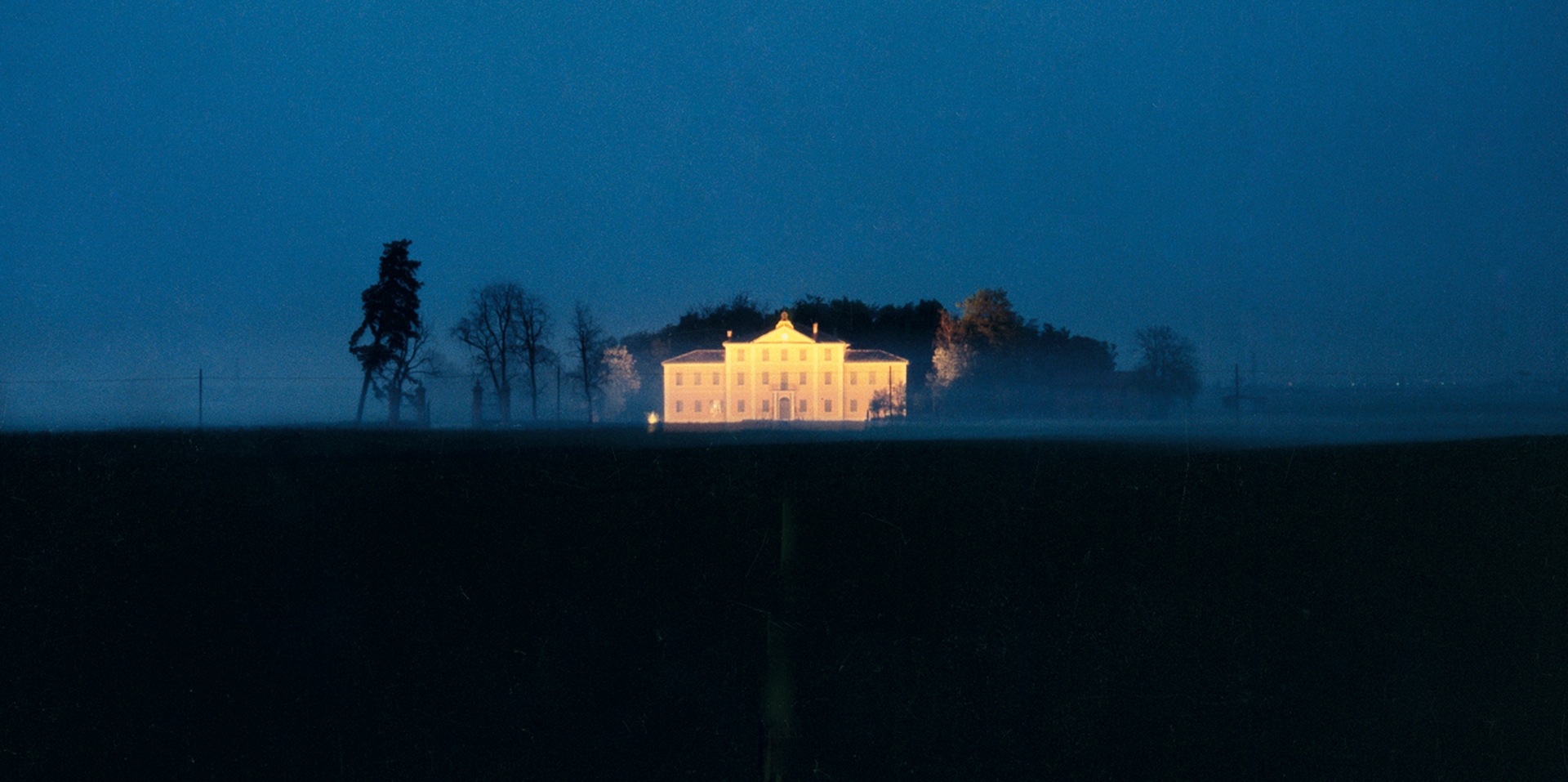
As an artist, Luigi Ghirri is now credited with proving the importance of colour photography as an artistic medium. At the same time, the way in which he mixed theatricality, fiction and reality anticipated today’s most important art photographers such as Cindy Sherman, Gregory Crewdson and Thomas Demand.
ABOUT THE ARTIST
During the 1980s Ghirri began to photograph Italian landscapes and was singled out as one of the most significant Italian authors in the history of 20th century photography. His conceptual photographs, coupled with a remarkable literary output, led him to produce several noteworthy photographic projects. In 1984 Ghirri curated Viaggio in Italia (Italian Voyage) which included the work of Olivo Barbieri, Gabriele Basicilico and Mimmo Jodice among other leading Italian photographers. The exploratory exhibition offered reflections and ideas about the country and was a milestone in the history of Italian contemporary photography. In 1989, he published Il Profilo delle Nuvole (Cloud Profiles) which included exclusively Ghirri’s captivating images and represents his highest achievement. Ghirri exhibited throughout Italy during his relatively brief life.

Luigi Ghirri (1943-1992) was an extraordinary photographer as well as a prolific writer and curator. He is considered to be the most important Italian photographer of the 20th century. Ghirri’s work covers a wide range of subjects mostly photographed in the Emilia Romagna region of Italy. His photos are presented in a deadpan manner that is occasionally humorous and often rooted in art history. Ghirri’s landscapes are a contemporary interpretation of Metaphysical painting in their mysteriousness and dreamlike atmospheres. They explore photographic traditions and highlight a fascination with everyday life.

Luigi Ghirri studied as a surveyor and as a graphic designer. He began taking photographs professionally at the age of 30. Shortly after, his work began attracting international attention. Time-Life magazine’s 1975 annual Photography Year Edition chose him as “Discovery of the Year”. In 1977, Ghirri founded a publishing house, Punto e Virgola, with his wife Paola Borgonzoni Ghirri. The establishment was able to support the growth of Italian photographic culture, publish important artist monographs and educate an audience that had little knowledge of photographic practice as an art form. In 1979 he published the first photobook of his own images, Kodachrome.

Ghirri’s work addresses the codes of photography. His pictures are not acts of mimesis or replication but ways of exploring reality. They are investigations of the unknown and examine the spiritual and the immaterial world. Photography for Ghirri was a form of poetry and a means of communication; it was a mental habitat where boundaries and territories intersect and fluctuate. His photography was used as a way to challenge the standardized view of Italy created by the media during the 1970s and 80s.

For many years, the deceptively simple nature of Ghirri’s photographs delayed critical attention to his practice. However, in 2013 his work has begun to gain its rightful recognition with a large-scale retrospective at MAXXI Rome and a display at the Venice Biennale.

As an artist, Luigi Ghirri is now credited with proving the importance of colour photography as an artistic medium. At the same time, the way in which he mixed theatricality, fiction and reality anticipated today’s most important art photographers such as Cindy Sherman, Gregory Crewdson and Thomas Demand.

Luigi Ghirri’s photographs can be found in prestigious private collections worldwide and museums such as the Stedelijk Museum (Amsterdam), Musée-Château (Annecy), Musée de la Photographie Réattu (Arles), Polaroid Collection (Cambridge, Massachusetts), Musée Nicéphore Niépce (Chalon-sur-Saòne), Museum of Fine Arts (Houston), Museo di Fotografia Contemporanea (Cinisello Balsamo, Milan), Galleria Civica (Modena), Canadian Centre for Architecture - Centre Canadien d'Architecture (Montreal), Museum of Modern Art (New York), Cabinets des estampes - Bibliotèque Nationale (Paris), Fond National d'Art Contemporain (Paris), Fnac Collection (Paris), Biblioteca Panizzi - Fototeca (Reggio Emilia), Fondazione MAXXI (Rome) and Palazzo Braschi - Archivio Fotografico Comunale (Rome).

Niciun comentariu:
Trimiteți un comentariu